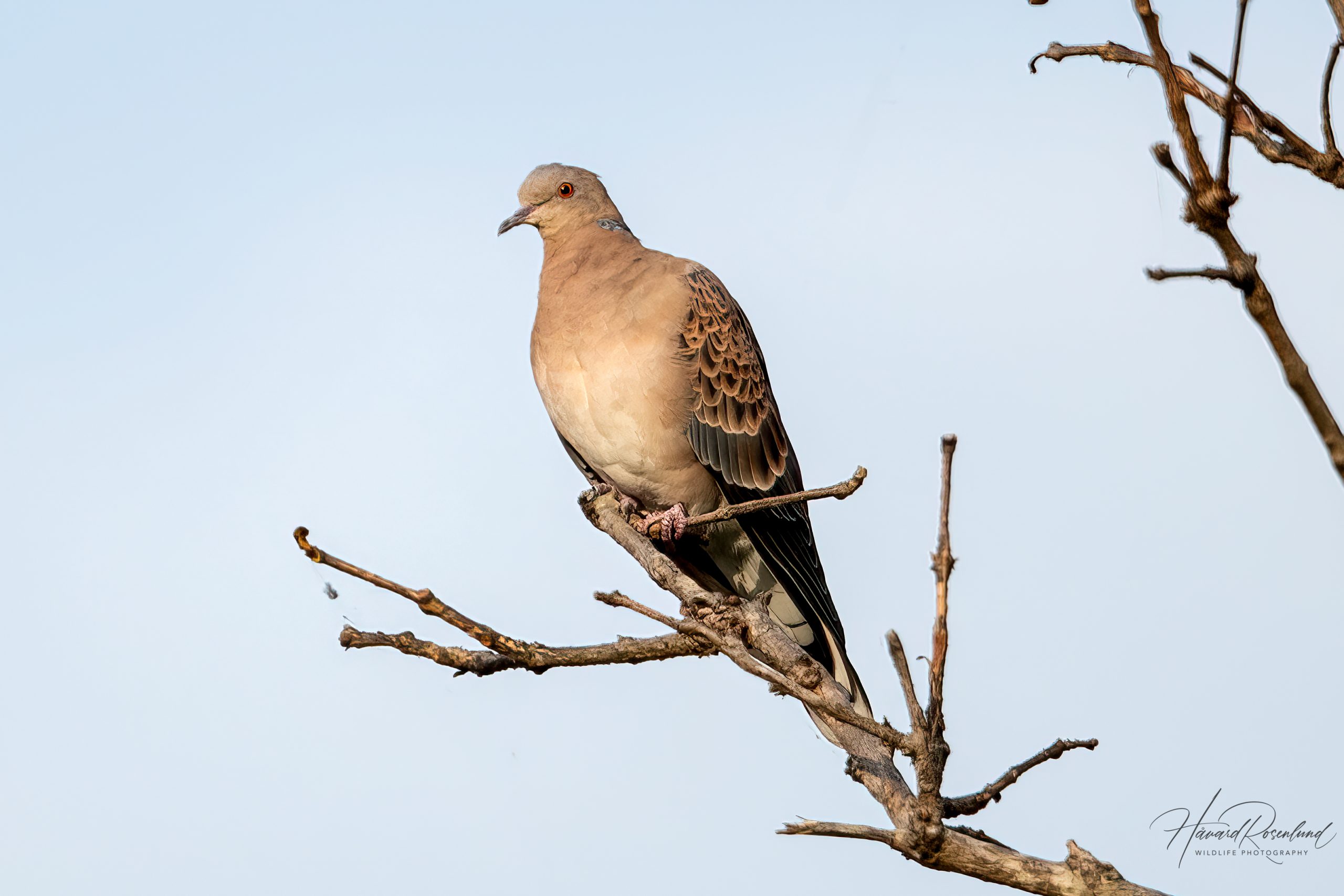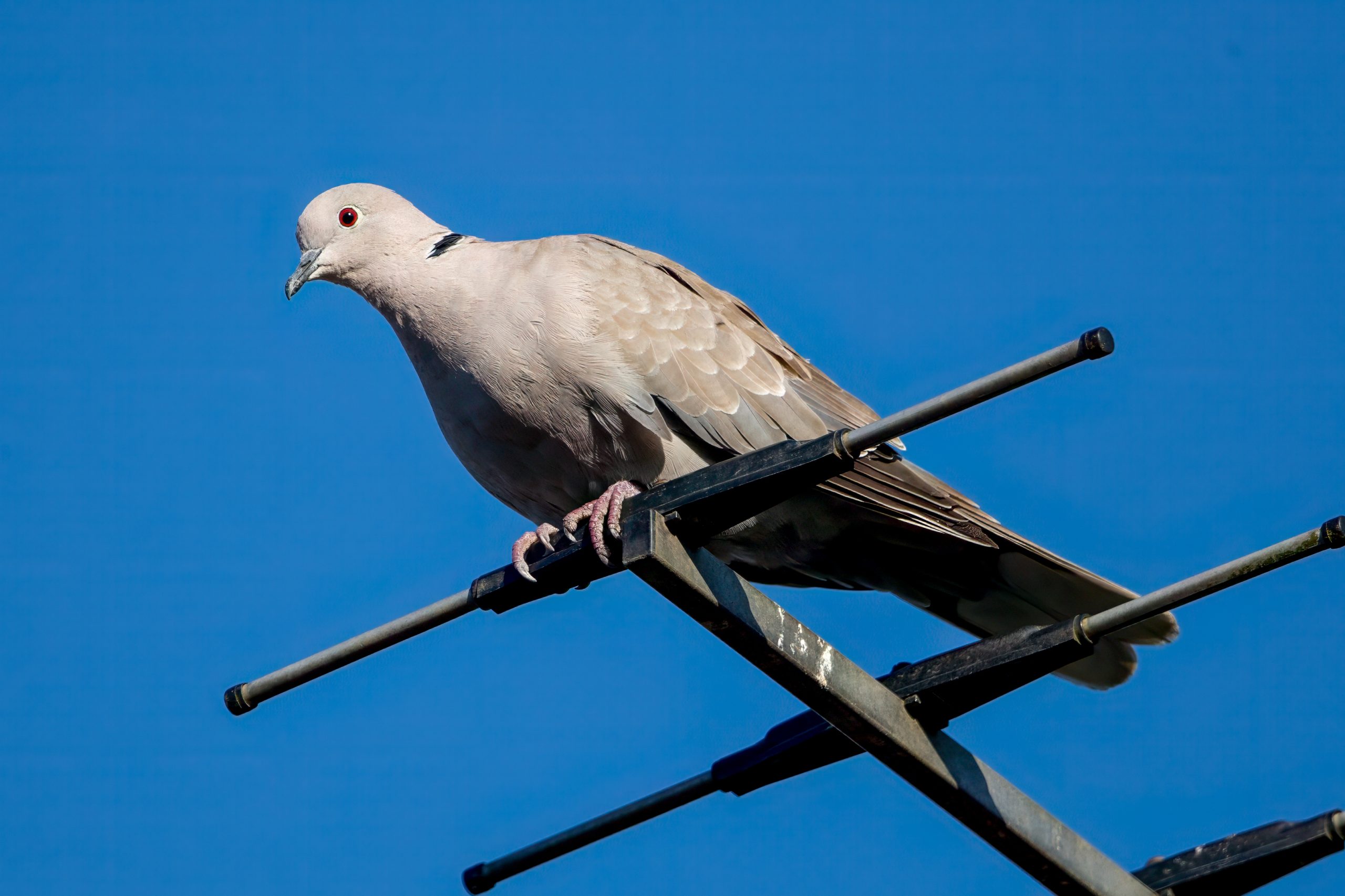Description
The Oriental turtle dove (Streptopelia orientalis) is a medium-sized bird native to a broad range across Asia, including parts of Russia, China, Japan, and extending into the Indian subcontinent. It typically measures around 33 to 35 cm (13-14 in) in length and has a wingspan of 47 to 55 cm (18.5-21.5 in). The plumage is characterized by a pinkish-brown head and underparts, with a distinctive black-and-white patch on the sides of its neck. The back and wings are brown with darker markings, and the tail is long and slightly rounded with a white tip.
This species differs from the similar European turtle dove (Streptopelia turtur) primarily in size, with the Oriental turtle dove being slightly larger. Additionally, the Oriental turtle dove exhibits a more pronounced scaly pattern on its upper body and has a slightly more extensive white tip on the tail.
Diet & habitat
Oriental turtle doves are versatile in their habitat selection, found in a variety of environments ranging from woodlands and forests to farmlands and urban areas. Their diet mainly consists of seeds, which they forage from the ground. They also feed on grains, berries, and small invertebrates. This species typically feeds by walking along the ground, pecking at food items, and occasionally takes to the air to catch flying insects.
Migration
The Oriental turtle dove exhibits migratory behavior, particularly in the northern parts of its range. Populations in North and Central Asia typically migrate southward to warmer regions during the winter months, traveling distances that can exceed 2,000 kilometers. This seasonal movement generally occurs from late September to November, with the birds returning to their breeding grounds from March to May. Populations found in warmer climates tend to be sedentary.
Nesting
The breeding season for the Oriental turtle dove varies by region but generally occurs from April to July. These birds are monogamous, forming strong pair bonds. They typically build their nests in trees or shrubs, using twigs and grasses to construct a simple platform nest. The female usually lays two eggs, which are incubated by both parents for about 14 to 16 days. After hatching, the chicks are fed by regurgitation and fledge in approximately 15 to 20 days.
Status
The Oriental turtle dove is listed as a species of least concern by the IUCN. While it has a wide distribution and stable population, it faces threats from habitat loss and hunting in some areas.







